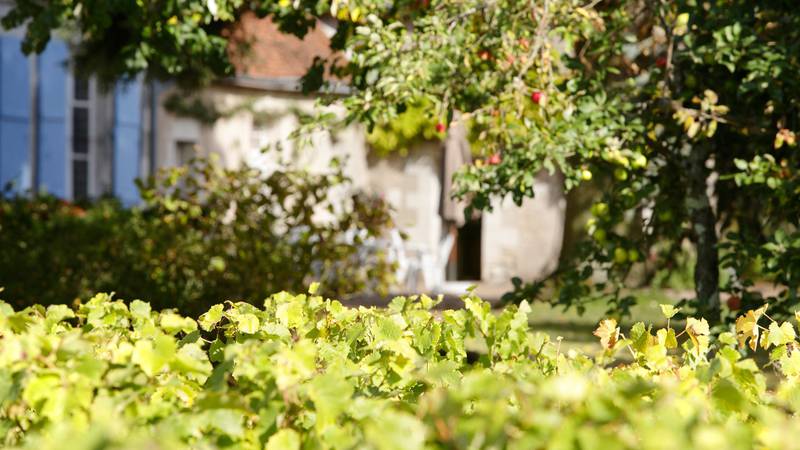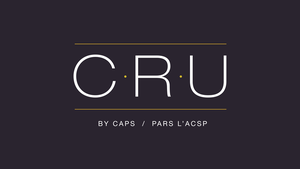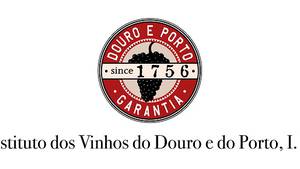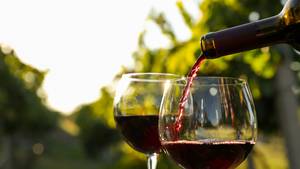Nestled within the heart of France, the Loire Valley unfurls an intriguing saga of terroir, varietals, and winemaking tradition.
The Loire Valley, characterized by the majestic Loire River, holds a special place among France's wine tourism destinations. It seamlessly blends natural beauty, untamed landscapes, and iconic châteaux with a warm sense of hospitality. Pierre-Jean Sauvion, Spokesperson for the Loire Valley Wines Council, emphasizes the region's strong values, stating, "Here, friendship, sharing, and conviviality are not just empty words. They are the values handed down to us, the winegrowers and wine merchants of the Loire Valley, by our forefathers. They shape the way we make our wines and welcome our visitors."
A Testament to 2,000 Years of History
Stretching along the banks of France's longest river for several hundred kilometers, the Loire Valley Vineyards are a true marvel of nature, spanning the country from one end to the other. They represent a remarkable fusion of environment and history, captured in the words of poet Charles Péguy dedicated to Touraine: "Along these curving hillsides and noble valleys, Châteaux are strewn like altars of repose. And in the majesty of morning and evening, the Loire and its vassals slip by along these alleys." Recognizing its exceptional value, the Loire Valley was designated as a UNESCO World Heritage Site in 2000, a distinction shared by only a select few vineyards worldwide. This accolade serves to further enhance the region's allure, as visitors flock to the Loire Valley for a multitude of reasons, with exploring the winegrowing area and traversing its 800 kilometers of wine routes to visit the numerous wineries being high on their lists.
The history of the Loire Valley Vineyards can be traced back 2,000 years to the time of the Romans. In the first century AD, Pliny the Elder mentioned the presence of vines along the Loire (Latin: Liger). Later, in the fourth century, the Loire Valley emerged as an early center of Christianity under the influence of Gregory of Tours, and the vineyards were meticulously tended to by Augustinian and Benedictine monks. Flourishing throughout the Middle Ages, the vineyards gained further prominence when Henry Plantagenet, Count of Anjou, ascended to the throne of England in 1154. He insisted on serving Loire wines at his court, a tradition upheld by his successors. The Capetians and later the Valois dynasties also extolled the virtues of wines from the Loire Valley, which had long been the political and cultural heart of the Kingdom of France. The region's renowned Châteaux, including Chambord, Chenonceau, Amboise, and Saumur, have become legendary throughout Europe. The vineyards, intricately intertwined with the local geography, follow the inland waterways. Since the time of the first Roman sailors navigating these waters, it has been the river and the opportunities it presents for commerce that have fueled long-distance trade, rather than the other way around.
The Loire Valley stands as a captivating destination that harmonizes history, natural beauty, and the art of winemaking. Its vineyards, nurtured by the Loire River, have flourished for centuries, and the region's strong sense of hospitality ensures visitors a truly memorable experience. From exploring the iconic châteaux to savoring exquisite wines and immersing oneself in the region's cultural heritage, the Loire Valley continues to enchant all who venture into its timeless embrace.
A River Runs Through It: exploring the all-encompassing influence of the Loire
The Loire is the longest river in France. It along with its tributaries play an essential part to soils, the terroir, and the variety identity and variety of Loire Valley wines.

Fondly known as the "Garden of France," it offers a diverse range of soils that contribute significantly to its viticultural, and agricultural, richness. The valley stretches over 280 kilometers, encompassing a myriad of soil types, each influencing the character of its world-famous wines.
The central vineyards around Touraine boast a mix of gravel, sand, and clay on a limestone base, fostering diversity in grape varieties, including Chenin Blanc and Cabernet Franc.
In Anjou-Saumur, dark schist and carboniferous soils intersperse with Saumur’s world renowned tuffeau (chalk). Here, Chenin Blanc reveals its versatility in sparkling, dry, and sweet iterations.
Finally, in the west, the vineyards of the Nantes area are characterized by diverse soils of metamorphic rock, granite, gneiss, and mica-schist overlaid with light, sandy loam, bestowing distinct minerality to the Melon de Bourgogne grape used in Muscadet wines.
Let’s not forget that soil is not limited to viticulture. Part of the appeal of the wines of the Loire and their inextricable link to food. The Loire's more fertile alluvial terraces and riverbanks also sustain diverse crops beyond viticulture. The amalgamation of river sediments, sandy soils, and rich organic matter make the region ideal for cultivating fruits, vegetables, and grains. The Loire Valley's soil diversity not only defines the region's enological distinctiveness but also enhances the biodiversity and agricultural abundance, making it a critical aspect of this cultural landscape, and a sommelier’s dream for pairing wines with the food of the land.
Time and Tide Wait for No Man: the river’s long-standing influence on the climate

The influence of the tides on the climate of the Loire's wine regions is a fascinating interaction of marine and terrestrial forces. Situated in northwestern France, the Loire Valley boasts an array of distinct climates due to the vast stretch of the Loire River, the longest in France. In the regions closest to the Atlantic coast, the river's estuary is subject to the semi-diurnal tides, which can penetrate as far inland as Ancenis, 100 kilometres from the sea.
Tidal movements affect the climate, primarily by moderating temperature extremes. Sea water holds heat far more effectively than air, and this thermal inertia results in milder temperatures in vineyards near the tidal reach of the river. In the winter, the tidal influence can help prevent frost, protecting the delicate vines, while in the summer, it can cool down excessively high temperatures, providing an optimal growing environment.
Moreover, the ebb and flow of the tides can affect humidity levels and precipitation patterns. The increased moisture of the western Loire reflective of the want for earlier harvests contributing to lighter alcohol and more delicate nature of the wines of Muscadet, while the comparatively drier weather that occurs as one moves east allows vignerons to harvest later, a great benefit for varietals like Chenin Blanc, known for their crisp acidity and fruitiness, and ability to produce numerous wine styles, including delicious late harvested sweet wines.
The tidal effect has long been part of defining the very terroir of the Loire and the wines the valley is producing. The effect has a significant, multifaceted impact on the Loire's wine regions' climate, shaping the character and quality of the wines they produce. These natural rhythms, interplaying with the land and the vine, help create wines that are deeply tied to their terroir, and which have evolved over time.
DISCOVER THE LOIRE VALLEY’S VARIETALS
The Loire Valley, one of France's most diverse wine regions, is renowned for its high-quality white wines made from a range of varietals.

The Whites of Loire: bright and light to rich and luscious

Representing 31 per cent of white production, Melon de Bourgogne is most found in the Muscadet region where it produces light-bodied, crisp, and mineral-driven wines with an expressive acidity, often aged "sur lie" for added depth and texture.
Sauvignon Blanc is known for its pronounced acidity, expressive aromatics, and flavors of citrus, and gooseberry.
Chenin Blanc ranks third in production (27 per cent) but first in versatility as it produces everything from dry, minerally wines in Savennières to lusciously sweet, botrytized wines in Coteaux du Layon, not forgetting the sparkling wines of Saumur and Vouvray. Depending on vinification, Chenin Blanc can exhibit a range of flavors from fresh apple and quince to rich honey and dried fruit.
Other varietals include Chardonnay, Folle Blanche, Chasselas, Romoranin, Sauvignon Gris and Tressalier.
Seeing the Loire Through Rosé and Red Glasses: meet the red varietals of the Loire

The Loire Valley, though renowned for its white wines, also produces reds of outstanding quality from a number of varietals.
Cabernet Franc is the most significant red varietal in the Loire, representing more than 50 per cent of dark-skinned varietals is most notably grown in Chinon, Bourgueil, and Saumur-Champigny. Known for its bright red fruit, fresh herbaceousness, and silky tannins, Loire Valley Cabernet Franc is more elegant and lighter in body than its counterparts from warmer climates.
Gamay, famous for being the grape of Beaujolais, is also grown in the Loire to great effect, particularly in the areas of Touraine and Anjou, where it produces fresh, fruity wines with a distinctively light and juicy character.
Pinot Noir and Cabernet Sauvignon make up 7 and 5 per cent of production, but the Loire is also home to two unique varietals, Grolleau and the rare Pineau d'Aunis grape. Grolleau is often used to make the refreshing rosé of Anjou, while the rarer Pineau d'Aunis is grown in small quantities in Anjou and Touraine. Here are produces light-bodied, food friendly, fresh styles of wine with a distinctive white pepper spice and tart red fruit flavors.
This blend of tradition and variety underpins the Loire's fascinating red wine landscape and further evidence as to why the Loire is known as the “Garden of France.”







